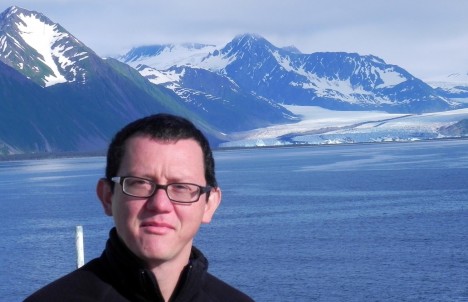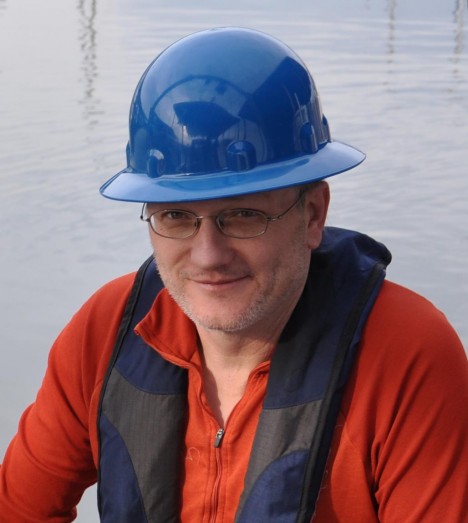Three members of the Ocean Ecology Laboratory’s Field Support Group (FSG; Code 616) will embark on a 45-day journey from Hobart, Tasmania to Papeete, Tahiti on the icebreaker R/V Nathaniel B. Palmer (NBP). The field campaign is part of the US Repeat Hydrography, P16S, 2014 under the auspices of GO-SHIP and sponsored by the US Climate Variability and Predictability Program (CLIVAR). You can find more information about the program here. The FSG will collect biogeochemical samples and bio-optical data across the South Pacific. These data will eventually be ingested into NASA’s SeaWiFS Bio-optical Archive and Storage System (SeaBASS) and subsequently used for ocean color satellite validation activities.
During the next six weeks, I will be helping my colleagues chronicle their journey over the high seas. They will share not only information about the science but also describe the daily life of a sea-going scientist. I, too, participate in many of these campaigns and am very familiar with the NBP having sailed on it three times during my career. Alas, I could not participate in the journey so must live vicariously through my colleagues. Below, you will find the biographies of the three NASA scientists that are participating on this cruise: Joaquin Chaves, Scott Freeman, and Mike Novak. You can also follow the ship track here.
Joaquin Chaves, received his PhD in oceanography from the University of Rhode Island in 2004. For his graduate work he conducted research on estuarine biogeochemistry. He held postdoctoral positions at the Marine Biological Laboratory in Woods Hole, MA, and at Brown University, in RI, where he focused on the biogeochemistry of land use change in tropical forests, particularly in the Amazon region. He’s been a contract scientist at NASA-GSFC since 2009, where he has focused on ocean color satellite remote sensing and marine bio-optics. He has participated in ocean-going field campaigns to the Atlantic, Pacific, and Arctic Oceans, as well as the East China Sea.
A native Californian, Scott Freeman grew up in Salinas, near the Monterey Bay, and attended the University of California, San Diego. After a lengthy hiatus in New York City, he returned to college and received a B.S. in Biology from the City University of New York. He then attended the University of Rhode Island’s Graduate School of Oceanography, completed a master’s degree, and stayed in Rhode Island to work first for the URI, and then for Wetlabs, a manufacturer of oceanographic optical instruments. While in Rhode Island, he participated in many cruises and coastal exercises, including NASA’s Southern Ocean Gas Exchange Experiment (SO GASEX) and ONR’s Radiance in a Dynamic Ocean experiments (RADYO).
Since joining SSAI in 2011, Scott has participated in several field campaigns for NASA’s Ocean Ecology Laboratory, and is responsible for AOP and IOP data collection and processing. He lives in Alexandria, VA with his wife Heidi and sons Charles and Adrian. When not engaged in field research, one can find him playing bass for the Washington Metropolitan Philharmonic Orchestra.
Mike Novak grew up in Piscataway, New Jersey, about 30 miles southwest of Newark. After graduating high school he attended the Richard Stockton College of New Jersey where he earned a B.S. degree in marine science. After college, he attended graduate school at the University of New Hampshire where he earned an M.S. degree in Oceanography. He worked as a researcher at UNH before relocating to the Washington D.C. area where he now works as an oceanographic researcher at NASA-GSFC. When he is not sailing the high seas, he is also an avid musician playing at various venues around the D.C. area with his band Novakaine.
Tags: carbon, NASA, ocean color, oceanography, optics, phytoplankton, radiometry, South Pacific








Where did Mike go to high school? I am originally from Edison and had a lot of friends in Piscataway.
Hi Mike,
I believe he went to Piscataway High School. I will double check with him
to be sure.
I’m no longer sure the place you might be obtaining your details, nonetheless very good matter. I need to commit a while mastering extra or maybe understanding additional. Thanks for magnificent information I used to be in search of this info for my vision.
All of the citations are listed at the bottom of the blog for your reference. Thanks!